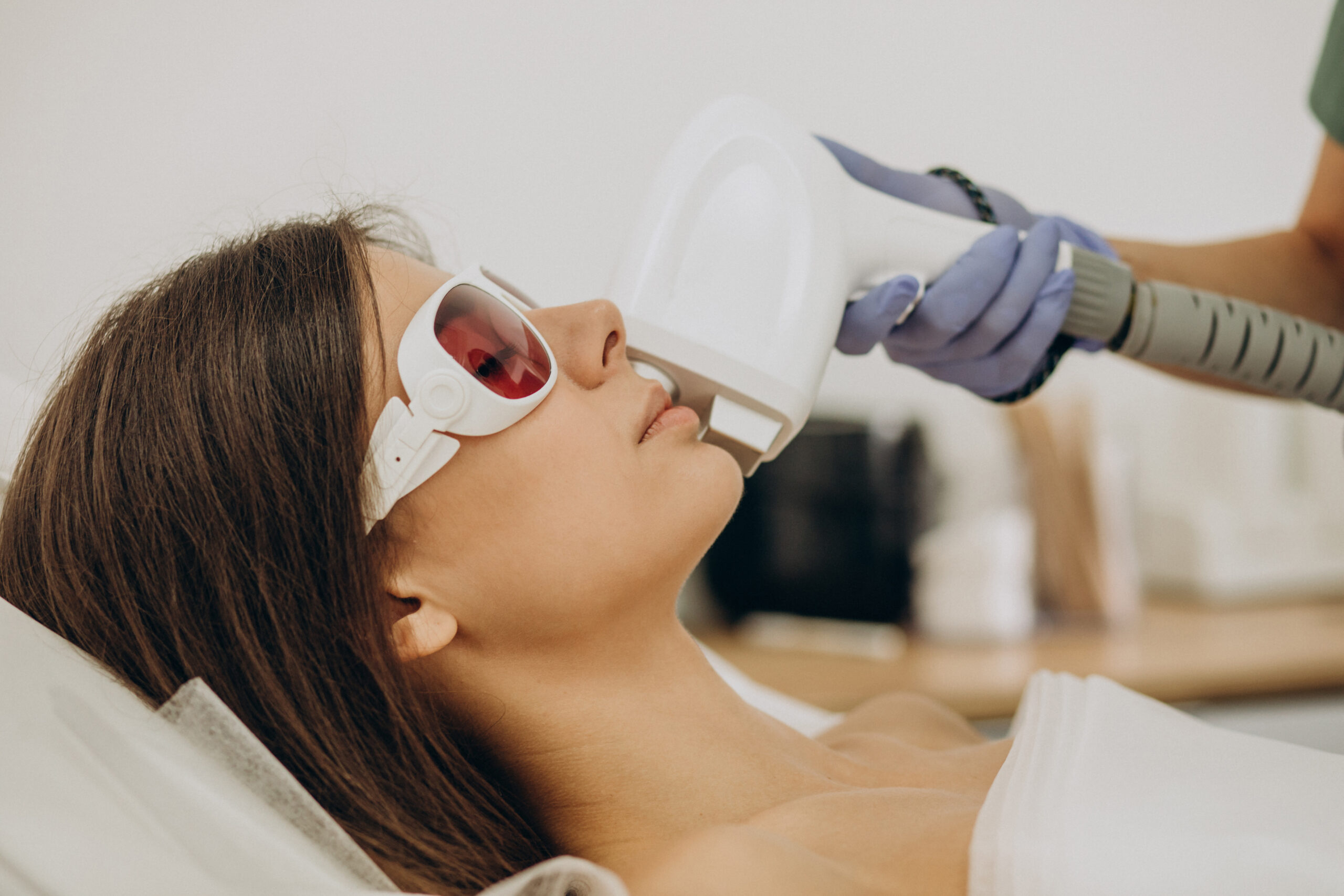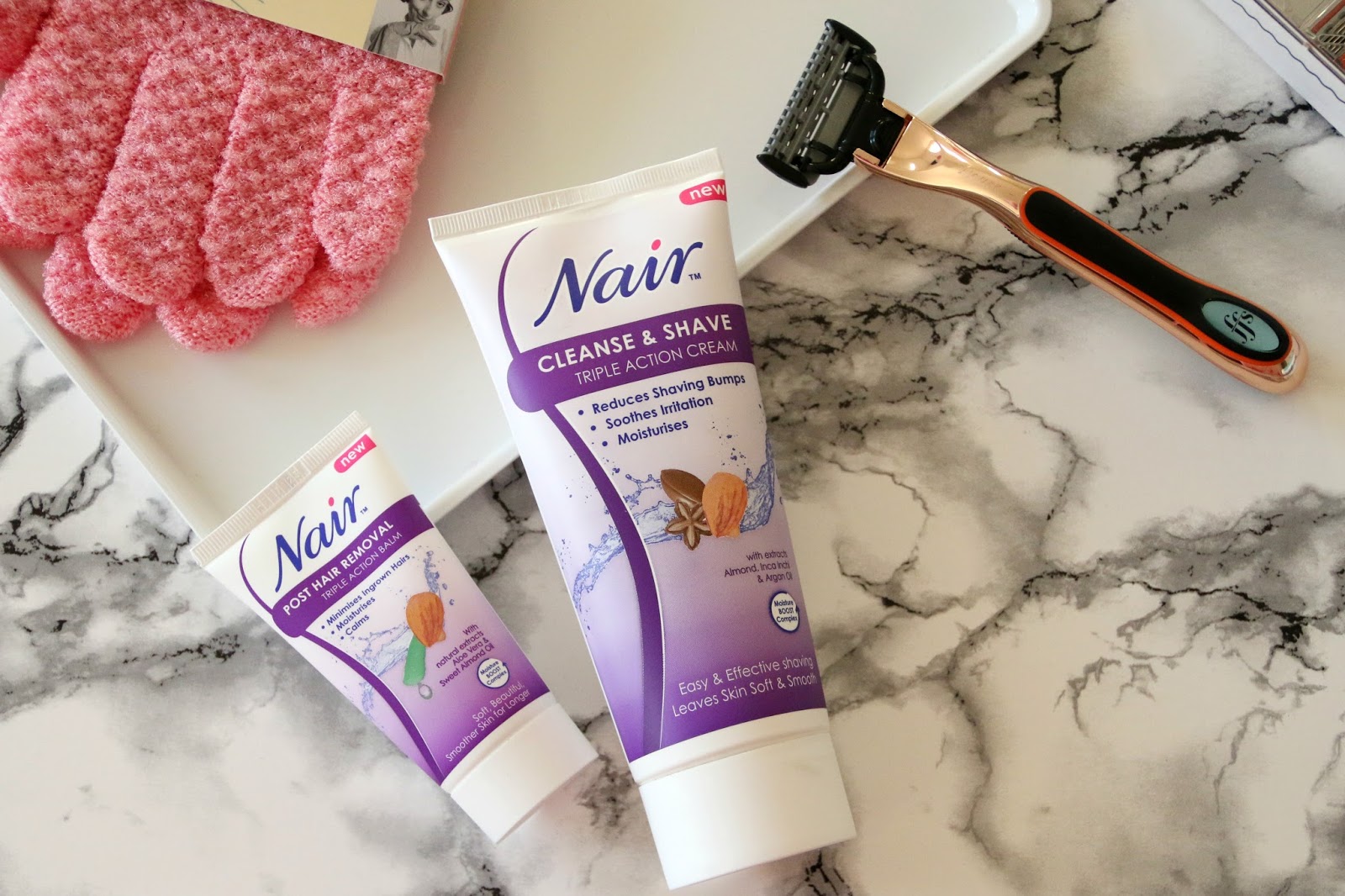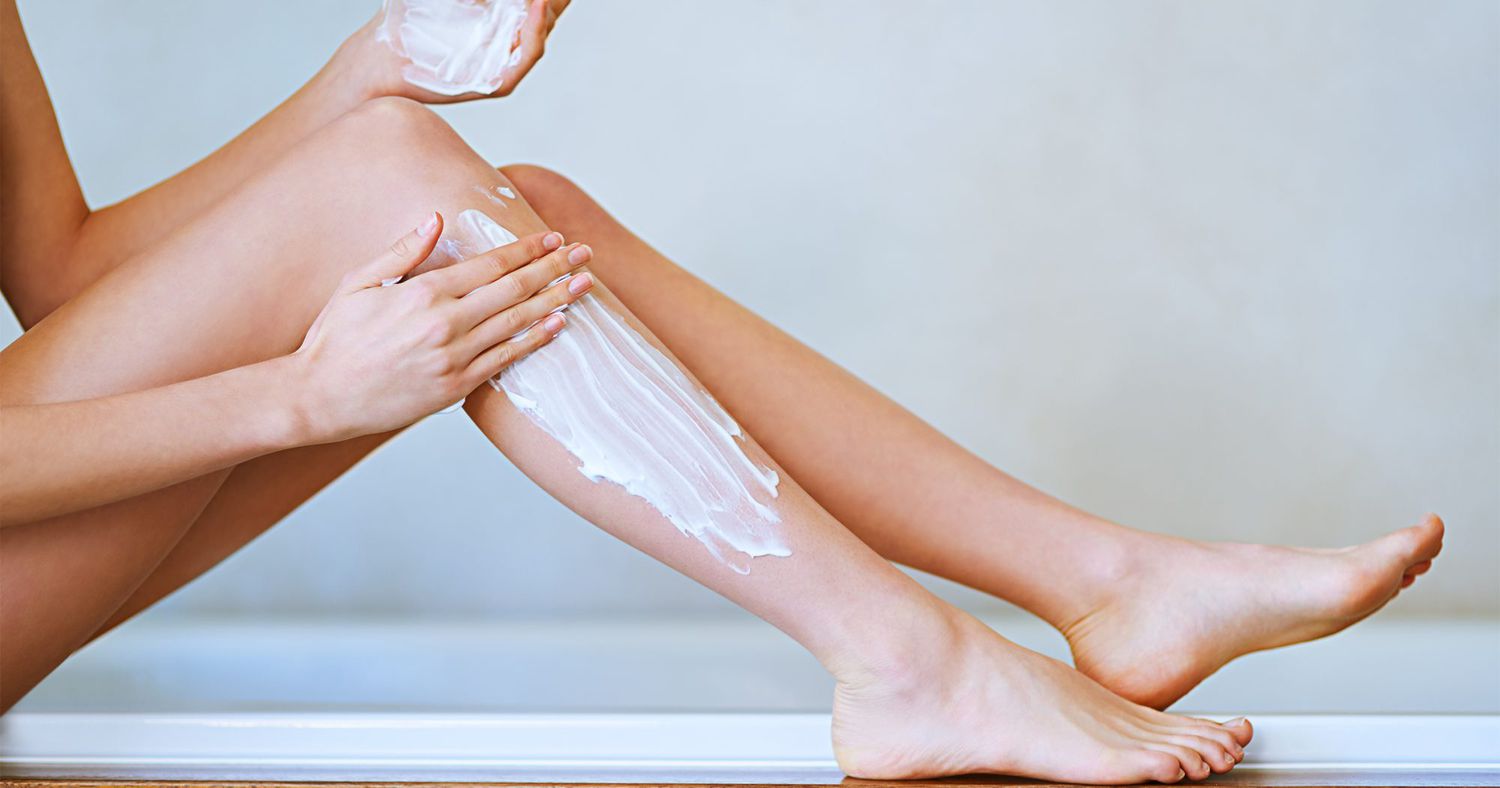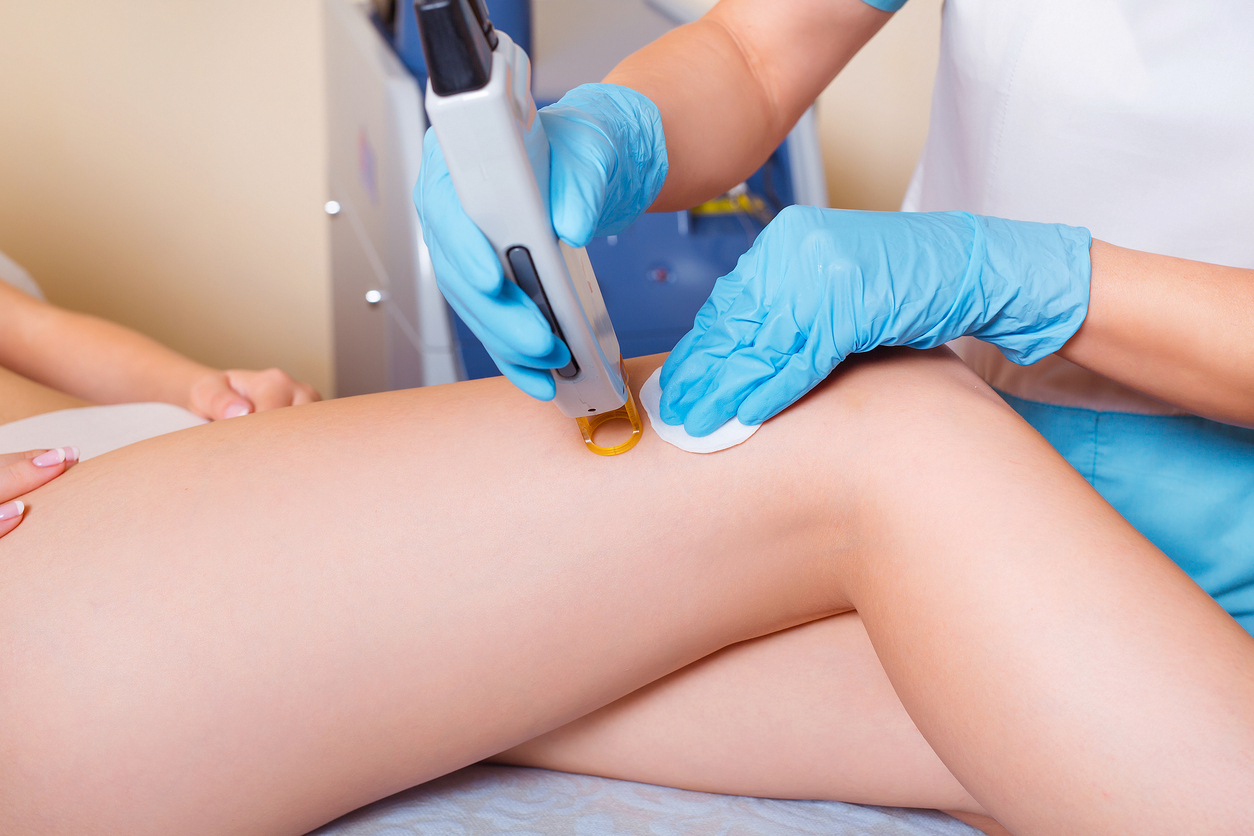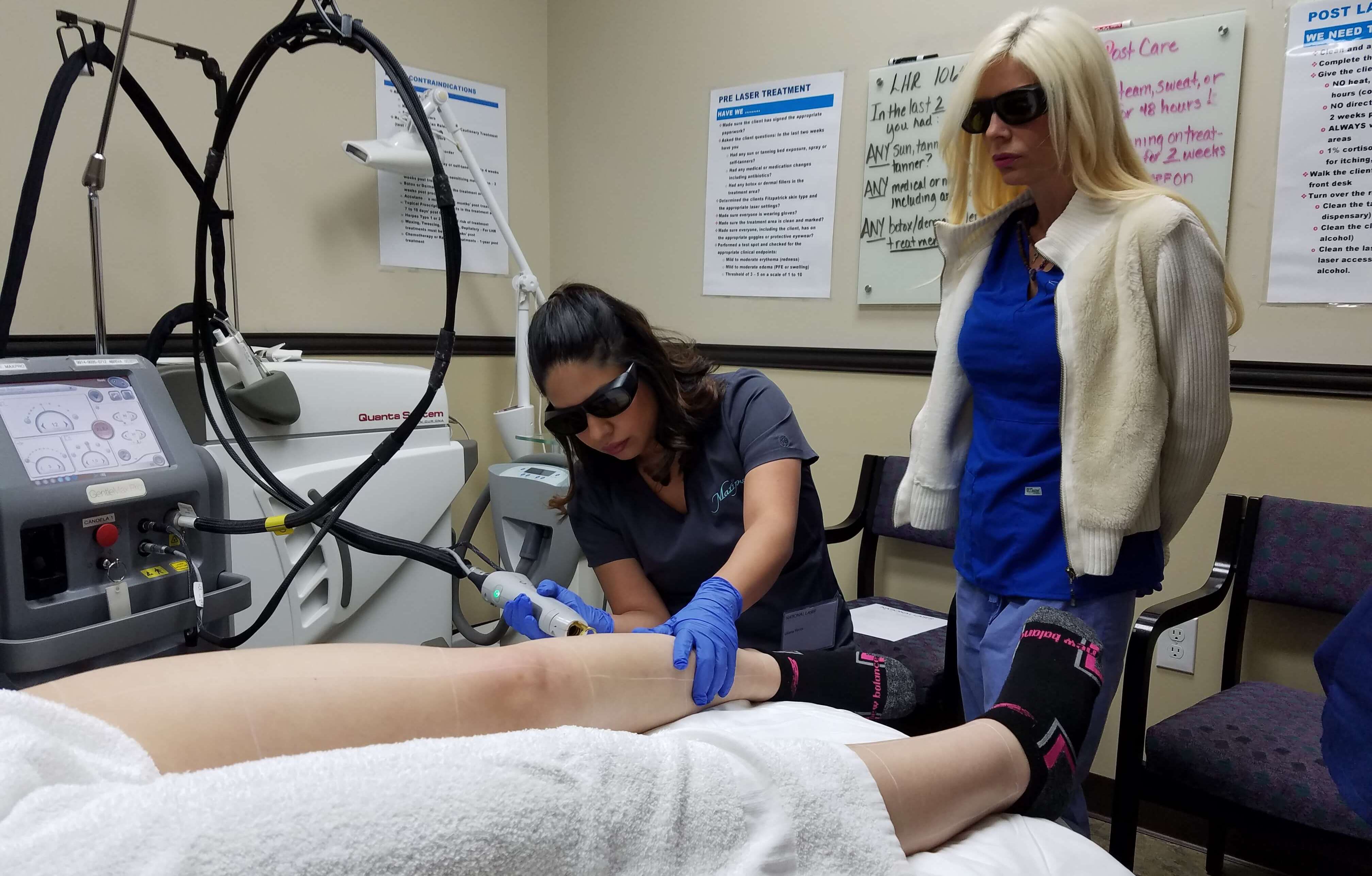Home>How-to Guides>For Women>How To Use Laser Hair Removal


For Women
How To Use Laser Hair Removal
Modified: September 23, 2023
Discover the ultimate guide on how to use laser hair removal for women. Say goodbye to unwanted hair with our step-by-step instructions and achieve smooth, long-lasting results.
(Many of the links in this article redirect to a specific reviewed product. Your purchase of these products through affiliate links helps to generate commission for Under-tec.com, at no extra cost. Learn more)
Table of Contents
Introduction
Laser hair removal has become an increasingly popular method for achieving smooth and hair-free skin. Whether you struggle with excess hair growth or simply want to simplify your beauty routine, laser hair removal offers a long-term solution to unwanted hair. This cutting-edge treatment uses laser technology to target and destroy hair follicles, resulting in permanent hair reduction over time.
Understanding the basics of laser hair removal is essential before undergoing the procedure. By familiarizing yourself with the process, you can make informed decisions and have realistic expectations about the outcomes. In this article, we will discuss the ins and outs of laser hair removal, from preparation to aftercare, as well as the pros and cons associated with this treatment.
If you’re tired of the endless cycle of shaving, waxing, or plucking, laser hair removal holds the promise of smooth, stubble-free skin. So, let’s dive into the world of laser hair removal and discover how you can make this advanced technique work for you.
Understanding Laser Hair Removal
Laser hair removal is a cosmetic procedure that uses concentrated beams of light to remove unwanted hair from various parts of the body. The laser targets the pigment in the hair follicles, generating intense heat that damages the follicles and inhibits future hair growth. This procedure is precise, effective, and offers long-lasting results.
The key principle behind laser hair removal is selective photothermolysis. This means that the laser’s energy is absorbed by the dark pigment, or melanin, in the hair follicles, while leaving the surrounding skin unharmed. As a result, the laser effectively destroys the hair follicles while minimizing the risk of damage to the skin.
It’s important to note that laser hair removal is most effective on individuals with dark hair and light skin, as the contrast between hair color and skin color allows for better absorption of the laser energy. However, advancements in technology have made laser hair removal accessible to a wider range of skin and hair types, including individuals with darker skin tones.
While laser hair removal offers permanent hair reduction, it’s important to understand that multiple sessions are required to achieve optimal results. Hair grows in cycles with active and dormant periods. The laser can only target hair follicles in the active growth phase, which is why multiple treatments are necessary to effectively target all the hair follicles.
It’s also worth mentioning that laser hair removal is a customizable procedure. The treatment can be adjusted based on the individual’s skin type, hair color, and desired outcomes. A thorough consultation with a qualified professional is essential to determine the most suitable settings and treatment plan for each individual.
Overall, laser hair removal is a safe and effective method for reducing unwanted hair. It provides long-lasting results, eliminates the need for constant shaving or waxing, and can improve the overall smoothness and texture of the treated area. However, it’s important to keep in mind that results may vary from person to person, and regular maintenance sessions may be required to maintain the desired outcome.
Preparing for Laser Hair Removal
Before undergoing laser hair removal, there are several important steps you can take to ensure a successful and comfortable treatment. Proper preparation helps optimize the effectiveness of the procedure and minimizes any potential risks or side effects.
The first step in preparing for laser hair removal is to schedule a consultation with a reputable and experienced provider. During this consultation, you will discuss your medical history, skin type, and hair concerns. The provider will also assess your eligibility for the treatment and answer any questions or concerns you may have.
It’s crucial to follow the pre-treatment instructions provided by your provider. These instructions may include avoiding sun exposure, tanning beds, and self-tanners for a certain period before the treatment. Sun exposure can increase the risk of adverse reactions and skin damage during the procedure. If you have a tan or sunburn, it’s best to wait until your skin has fully recovered before scheduling your laser hair removal session.
In addition to sun protection, you may be advised to refrain from plucking, waxing, or electrolysis for a few weeks prior to the treatment. These methods remove the hair from the follicles, which is necessary for the laser to target and destroy the follicles effectively. Shaving, on the other hand, is usually permitted and recommended a day or two before the treatment to ensure that the targeted hair is short and visible.
It is worth mentioning that certain medications, such as photosensitizing drugs or antibiotics, may interfere with the laser treatment. It’s important to provide your provider with a complete list of medications and supplements you are currently taking to ensure their compatibility with laser hair removal.
Lastly, it’s essential to arrive at your laser hair removal session with clean, makeup-free skin. This allows the laser to penetrate the skin more effectively without any barriers. Your provider may cleanse the treatment area prior to the procedure to ensure optimal conditions for the laser treatment.
By following these pre-treatment guidelines, you can maximize the effectiveness of your laser hair removal sessions and minimize the risk of complications. Remember to communicate openly with your provider and ask any questions or concerns you may have before proceeding with the treatment.
The Procedure of Laser Hair Removal
The laser hair removal procedure typically begins with the provider preparing the treatment area by cleansing the skin and applying a cooling gel or numbing cream, if necessary. This helps to minimize any discomfort during the procedure. You may also be provided with protective eyewear to shield your eyes from the laser light.
Once the skin is prepared, the provider will use a handheld device that emits the laser energy. The device will be pressed gently onto the skin, and the laser pulses will be delivered to the targeted hair follicles. You may feel a slight tingling or snapping sensation as the laser energy is applied, but it’s generally well-tolerated by most individuals.
The duration of the laser hair removal session can vary depending on the size of the treatment area. Smaller areas, such as the upper lip or underarms, may only take a few minutes, while larger areas like the legs or back may take up to an hour.
The laser targets the pigment in the hair follicles, heating them up and damaging their ability to regrow hair. It’s important to note that the laser will not remove all the hair immediately, but rather result in gradual hair reduction over a series of treatments. Multiple sessions are necessary to target all the hair follicles in their active growth phase and achieve long-lasting results.
After each treatment, you may experience some temporary side effects like redness, swelling, or mild discomfort in the treated area. These side effects typically resolve within a few hours to a few days. Your provider may recommend applying a soothing cream or cold compresses to alleviate any discomfort.
It’s important to follow the post-treatment instructions provided by your provider. These instructions may include avoiding sun exposure, hot showers, saunas, or vigorous exercise for a certain period after the treatment. Your provider will also advise you on the recommended intervals between sessions to ensure optimal hair reduction and prevent any potential complications.
Throughout the entire laser hair removal process, it’s crucial to maintain open communication with your provider. If you have any concerns or questions during or after the treatment, do not hesitate to reach out and seek their guidance. They are there to ensure your comfort, safety, and satisfaction with the procedure.
Aftercare and Recovery
After undergoing laser hair removal, it’s important to follow proper aftercare instructions to ensure optimal healing and minimize the risk of complications. While laser hair removal is a relatively safe procedure, taking care of your skin post-treatment can help enhance the results and maintain the health of your skin.
Immediately after the treatment, you may experience some redness, swelling, or mild discomfort in the treated area. These side effects are temporary and typically subside within a few hours to a few days. Applying a cold compress or using a soothing cream recommended by your provider can help alleviate any discomfort or inflammation.
It’s essential to avoid direct sunlight and UV exposure for at least two weeks following the treatment. The skin can be more sensitive to sunlight after laser hair removal, and exposure can increase the risk of complications such as hyperpigmentation or skin discoloration. If you need to go outdoors, make sure to apply a broad-spectrum sunscreen with an SPF of 30 or higher and wear protective clothing to shield the treated area.
Avoiding hot baths, saunas, steam rooms, and excessive sweating for a few days after the treatment is also recommended. These activities can cause irritation or infection in the treated area. Instead, opt for lukewarm showers and gentle cleansing of the skin.
It’s normal to experience some shedding of the treated hair in the days following laser hair removal. This is a sign that the treatment is working, and the damaged hair follicles are being expelled. Avoid picking or pulling at this hair, as it will naturally fall out over time.
As for the long-term care of the treated area, it’s important to continue protecting your skin from excessive sun exposure and use sunscreen regularly, even after the initial healing phase. This can help prevent future damage and maintain the results of the laser hair removal treatments.
If you notice any unusual side effects or have concerns about your recovery process, don’t hesitate to contact your provider. They can provide guidance, assess your progress, and address any questions or concerns you may have.
Remember, each individual’s recovery process may vary, and it’s important to follow the aftercare instructions provided by your provider to ensure the best possible results and minimize any potential risks or complications.
Pros and Cons of Laser Hair Removal
Laser hair removal offers numerous benefits for individuals seeking a long-term solution to unwanted hair. However, it’s important to consider both the pros and cons before deciding to undergo this procedure.
Pros:
- Permanent hair reduction: Laser hair removal targets the hair follicles, inhibiting their ability to regrow hair. Over time, this can lead to permanent hair reduction, eliminating the need for constant maintenance.
- Precision and effectiveness: Laser hair removal can target specific areas of the body with precision, making it an effective treatment for removing unwanted hair from various areas, including the face, legs, underarms, bikini line, and more.
- Time-saving and convenient: Unlike temporary hair removal methods such as shaving or waxing, laser hair removal offers long-lasting results. This means you can save time and effort on frequent hair removal routines.
- Improved skin texture: With laser hair removal, not only will you achieve smoother skin by eliminating hair, but the laser can also improve the texture of the treated area. It can reduce ingrown hairs and help with conditions like folliculitis.
- Customizable treatment: Laser hair removal can be tailored to suit your unique needs. The treatment can be adjusted based on your skin type, hair color, and desired outcomes. A qualified provider will personalize the settings to ensure the best results for you.
Cons:
- Multiple sessions required: Laser hair removal requires multiple treatment sessions to target all hair follicles in the active growth phase. This means you may need several sessions, typically spaced a few weeks apart, to achieve desired results.
- Not suitable for everyone: While advancements in technology have made laser hair removal accessible to a broader range of skin and hair types, it may not be suitable for individuals with certain conditions or medical histories. During the consultation, your provider will assess your eligibility for the treatment.
- Possible side effects: While generally safe, laser hair removal can have temporary side effects such as redness, swelling, and mild discomfort in the treated area. In rare cases, there may be a risk of skin burns, blistering, or changes in skin pigmentation.
- Cost considerations: Laser hair removal is typically more expensive upfront compared to other hair removal methods. However, considering the long-term reduction in hair growth and maintenance, many find that the investment is worthwhile.
- Variable results: Individuals may experience varying degrees of hair reduction and regrowth. Factors such as hair color, skin type, and hormonal changes can affect the outcome of laser hair removal. Additionally, results may not be entirely permanent for everyone, and occasional maintenance sessions may be required.
Before deciding to undergo laser hair removal, it’s important to weigh these pros and cons, consider your specific circumstances, and consult with a qualified provider to determine if this treatment is the right choice for you.
Frequently Asked Questions (FAQs)
Here are some common questions that people have about laser hair removal:
- Is laser hair removal permanent?
- Does laser hair removal hurt?
- How many sessions do I need?
- Are there any risks or side effects?
- Can laser hair removal be performed on all skin and hair types?
- Can laser hair removal be done on any part of the body?
- Can I undergo laser hair removal while pregnant?
Laser hair removal offers long-term hair reduction, but it is not considered permanent. It can significantly reduce hair growth, and many people experience long-lasting results. Occasional maintenance sessions may be required to maintain the desired outcome.
Laser hair removal may cause some discomfort, but it is generally well-tolerated by most individuals. The sensation is often described as a slight tingling or snapping feeling. Many providers use cooling devices or numbing creams to minimize any discomfort.
The number of sessions needed varies depending on factors such as hair color, skin type, and the area being treated. Typically, multiple sessions are required to target all the hair follicles in their active growth phase. On average, most individuals require between 6 to 8 sessions spaced several weeks apart to achieve optimal results.
While laser hair removal is generally safe, there are possible side effects such as redness, swelling, and mild discomfort in the treated area. In rare cases, there may be a risk of burns, blistering, or changes in skin pigmentation. It’s important to choose a reputable provider and follow their aftercare instructions to minimize any potential risks.
Advancements in technology have made laser hair removal suitable for a wider range of skin and hair types. However, the ideal candidates are individuals with dark hair and light skin, as the contrast between hair color and skin color allows for better absorption of the laser energy. Individuals with darker skin tones may require specialized lasers.
Yes, laser hair removal can be performed on almost any part of the body, including the face, arms, underarms, bikini line, legs, and back. The treatment is highly customizable, and the settings can be adjusted to suit the specific needs and desired outcomes for each area.
It is generally recommended to avoid laser hair removal during pregnancy due to the hormonal changes that can affect hair growth and skin sensitivity. It’s best to consult with your healthcare provider before undergoing any cosmetic treatment during pregnancy.
If you have any additional questions or concerns about laser hair removal, it is best to consult with a qualified provider who can address your specific needs and provide personalized information and advice.
Conclusion
Laser hair removal is a highly effective and popular method for achieving long-term hair reduction and smoother, more comfortable skin. By understanding the process and following the necessary precautions, you can experience the benefits of laser hair removal and say goodbye to the constant cycle of traditional hair removal methods.
During your laser hair removal journey, it’s important to find a reputable provider and have realistic expectations. Multiple sessions are typically required to achieve optimal results, and occasional maintenance sessions may be needed to sustain the desired outcome. It’s necessary to follow the pre and post-treatment instructions provided by your provider for the best results and to minimize any potential risks or side effects.
While laser hair removal offers significant advantages such as permanent hair reduction, precision, and improved skin texture, it’s crucial to weigh the pros and cons and consider your unique circumstances before undergoing the procedure. Consulting with a qualified provider can help address any concerns or questions you may have and ensure the best possible outcome.
So, if you’re tired of dealing with unwanted hair and are looking for a more permanent solution, laser hair removal may be the answer. Embrace the convenience, comfort, and confidence that come with hair-free skin, and take the first step towards a smoother and more carefree future.
